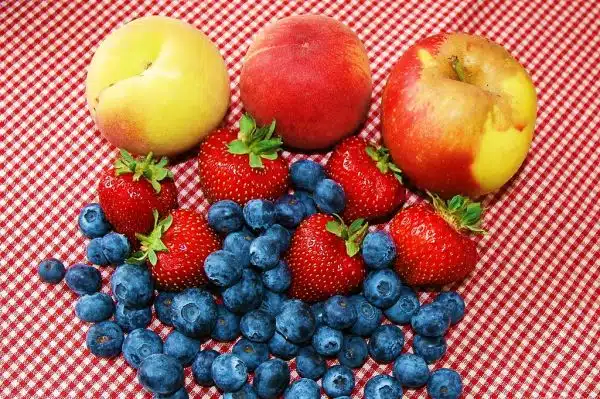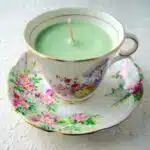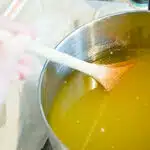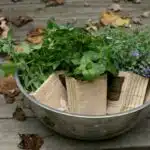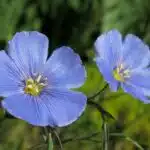Potpourri is a beautiful and elegant way to freshen up any room. Whether it’s for a special occasion or just to add a touch of elegance to your home, potpourri can be both functional and decorative. Making your own potpourri can be an enjoyable and rewarding experience, as it allows you to customize the fragrance and appearance according to your preferences.
To create the perfect blend of scents, it is important to understand what ingredients work well together and how to properly prepare them. In this article, we will explore the art of making potpourri from scratch. We will provide tips on selecting aromatic ingredients, drying and preserving them, blending fragrances, and creating unique combinations that are sure to delight your senses. By following these guidelines, you can create beautiful homemade potpourri that will enhance any space in your home.
Understanding The Basics Of Potpourri
Potpourri is an age-old tradition that has been used for centuries to add fragrance and beauty to homes. Potpourri is a mixture of dried flowers, herbs, spices, and other aromatic materials that are blended together to create a lovely scent. This delightful blend can be used in various ways, such as in sachets or as home decor.
If you want to make potpourri at home, it’s essential to understand the basics of this craft. One vital factor in making potpourri is selecting the appropriate container. Choosing the right container will depend on how you plan to use your potpourri. For example, if you intend to use it as home decor, then you might want a decorative glass jar or bowl with a lid. Alternatively, if you want to use it in sachets or as gifts, then small fabric bags could work well.
Using potpourri for home decor has become increasingly popular in recent times. It’s an inexpensive way to add fragrance and charm to your living spaces while also creating an inviting atmosphere for guests. When making potpourri for home decor purposes, consider using visually appealing botanicals such as rose petals or lavender buds. These ingredients not only smell great but also look beautiful when displayed in a decorative container such as a glass jar or bowl.
As we move onto selecting aromatics for your blend, keep in mind that the key to making great potpourri lies in finding just the right combination of scents and textures. With these fundamentals under control let us now turn our attention towards selecting aromatics for your blend without losing sight of our objective; creating an exquisite sensory experience through crafting a unique blend of fragrances and aromas that will delight not only yourself but also those who enter your home.
Selecting Aromatics For Your Blend
Herbs have long been used as an aromatic for potpourri and can range from sweet to savory. Flowers are also popular for their scent and range from floral to spicy. Fruits are used for their sweet citrusy scent and can also be used for their vibrant colors. Spices are often used for their intense fragrances and range from sweet to savory. Woods are often used for their earthy and woody aromas. Oils, such as essential oils, are often used for their therapeutic benefits and can be used to boost the scent of other aromatics.
Herbs
When it comes to selecting aromatics for your potpourri blend, herbs are a popular choice due to their versatility and wide range of fragrances. Herbs can be divided into two categories: culinary and medicinal. Culinary herbs like rosemary, thyme, and sage add a delicious aroma to potpourri blends while also providing a comforting feeling of warmth and comfort. Medicinal herbs such as lavender, chamomile, and peppermint offer soothing scents that can help relax the mind and body.
Growing herbs at home is an easy and cost-effective way to ensure that you have a steady supply of aromatic ingredients for your potpourri blends. Most herbs thrive in well-drained soil with plenty of sunlight, making them perfect for growing in pots or small garden beds. Be sure to research the specific needs of each herb before planting to ensure they receive adequate care.
When selecting herbs for your potpourri blend, consider the overall scent profile you want to achieve. For example, if you prefer a fresh and invigorating scent, consider adding lemon verbena or eucalyptus leaves. On the other hand, if you want a calming and relaxing scent profile, lavender or chamomile may be more suitable. By carefully choosing your herb selection based on both fragrance and function, you can create a unique potpourri blend that will uplift and inspire those around you.
Flowers
As an expert in potpourri making, I know that flowers are a must-have ingredient when it comes to creating a fragrant and beautiful blend. Flowers not only add a burst of color to your potpourri mix but also provide a wide range of aromas that can enhance the overall fragrance profile. Whether you’re arranging bouquets or planting them in your garden, flowers are an excellent choice for any potpourri enthusiast.
When selecting flowers for your potpourri blend, it’s important to consider their scent profile and how they will complement the other ingredients in your mix. Flowers such as roses, jasmine, and lilacs offer sweet and romantic scents that can create a relaxing and calming atmosphere. On the other hand, if you prefer a more invigorating aroma, consider adding marigolds or geraniums to your blend.
Growing flowers at home is relatively easy with some basic planting tips. Most flowers require well-drained soil with plenty of sunlight to thrive. Be sure to research each flower’s specific needs before planting to ensure they receive adequate care. By growing your own flowers, you’ll have access to fresh ingredients all year round, allowing you to experiment with different combinations and create unique blends that cater to your personal preferences.
Fruits
When it comes to selecting aromatics for your potpourri blend, flowers are not the only option. Fruits also offer a wide range of scents that can add a unique and delicious aroma to your mix. Fruit selection is important when creating your blend, as different fruits offer distinct fragrances that can complement or clash with other ingredients.
When selecting fruits for your potpourri mix, consider their scent profile and how they will interact with other ingredients. Citrus fruits such as oranges and lemons offer a refreshing and uplifting scent that can be paired with floral notes such as lavender or rosemary. Berries such as strawberries and raspberries offer a sweet and fruity aroma that can be balanced with woody scents like sandalwood or cedar.
Blending techniques are crucial when incorporating fruits into your potpourri mix. Dried fruit slices, such as apple or orange, can be added directly to the blend for an instant burst of fragrance. Alternatively, you can create a fruit-infused oil by steeping fruit peels in carrier oil for several weeks before adding it to your blend. Experimenting with different blending techniques and fruit combinations can lead to unique and delightful aromas for your home or gifts for loved ones.
Drying Flowers And Herbs
Having carefully selected your aromatic ingredients, the next step in making potpourri is to dry them. This ensures that they retain their fragrance for as long as possible. The most common way to dry herbs and flowers is by air drying or oven drying.
Herbs vs. Flowers: Before drying your chosen ingredients, it’s essential to know whether they are herbs or flowers. Herbs such as rosemary, sage, and lavender have thicker stems and leaves compared to delicate flowers like roses and lilacs. As a result, they require different methods of drying.
Air Drying vs Oven Drying: Air drying is the most natural way of drying plants. All you need to do is tie small bunches of herbs together and hang them upside down in a warm, dry place with good ventilation. For larger flowers such as roses, lay them flat on a screen or mesh surface in a warm room out of direct sunlight. On the other hand, oven drying is best for denser herbs like thyme or oregano because they contain more moisture than delicate flowers. Set your oven at 100 degrees Fahrenheit and lay your herbs out on a baking sheet lined with parchment paper for about two hours.
- To avoid mold growth when air-drying flowers, use silica gel packets.
- Consider using a dehydrator machine if you have one available.
- If using an oven, keep an eye on ingredients so that they don’t burn.
- When using air-drying techniques, ensure that the room has good ventilation.
Now that you’ve learned how to dry your plants correctly let’s move on to preserving these aromatics for potpourri-making.
Preserving Aromatics For Potpourri
Harvesting Techniques for Potpourri
Aromatic plants are the foundation of potpourri, and it is essential to harvest them correctly. There are several harvesting techniques that can be used to ensure maximum yield and quality. The timing of the harvest is crucial, as plants will produce different aromas depending on their growth stage. For example, lavender should be harvested when the flowers are fully open but not yet faded. This ensures that the essential oils are at their peak concentration.
Another technique is to use pruning shears instead of scissors or knives. Pruning shears create a clean cut that reduces damage to the plant, allowing it to heal faster and continue growing without stress. It is also important to avoid harvesting during wet weather, as this can cause mold and mildew growth on the plant material.
Aromatic Preservation Methods for Potpourri
Once harvested, aromatic plants need to be preserved properly to ensure longevity and potency in your potpourri. There are several methods for preserving aromatics, including air-drying, oven-drying, freeze-drying, and glycerin preservation.
Air-drying is the most traditional method and involves hanging bundles of herbs in a dry, dark place with good airflow for several weeks until they are completely dry. Oven-drying involves placing herbs on a baking sheet and drying them in an oven set to low heat. Freeze-drying uses a vacuum chamber to remove moisture from the herb while keeping its shape intact. Glycerin preservation involves soaking herbs in glycerin solution until they have absorbed enough liquid.
In conclusion,
Harvesting techniques and aromatic preservation methods play an integral role in creating high-quality potpourri. By using proper techniques when selecting and preserving your aromatic materials, you can maximize their aroma potential while ensuring long-lasting quality. In the subsequent section about choosing carrier ingredients for your potpourri, we will discuss how combining these preserved aromatics with other complementary ingredients can create a unique and delightful blend.
Choosing Carrier Ingredients For Your Potpourri
Herbs and spices can provide a fragrant and flavorful base for potpourri. Flowers, seeds, fruits, grains, wood chips, barks, leaves, nuts, and dried citrus can also be incorporated to add visual appeal and additional scent. Essential oils and aromatic fixatives can be used to enhance the fragrance, while potpourri base and accessories are required to store and display the finished product. When selecting ingredients, it is important to consider how the components can work together to create an aesthetically pleasing and aromatic potpourri.
Herbs
As a potpourri connoisseur, choosing the right carrier ingredients is essential in creating a delightful blend. One of the most popular and versatile options for carrier ingredients is herbs. Herbs come in a variety of aromas and have numerous benefits beyond just their scent, making them an excellent choice for potpourri.
Harvesting herbs for potpourri can be done in several ways. One option is to grow your own herb garden, allowing you to control the quality of the plants used. Another option is to purchase fresh herbs from reputable suppliers. When harvesting, be sure to choose herbs that are at their peak and have not yet flowered for optimal fragrance. Using proper drying techniques such as air-drying or low-heat dehydrating will help preserve the aroma and color of your herbs.
Herbs bring a natural freshness to any potpourri blend, providing a unique sensory experience that cannot be replicated by synthetic fragrances alone. From spicy cinnamon to calming lavender, there are countless varieties of herbs available to suit any taste preference. By carefully selecting and harvesting your herbs with care and attention, you can create a beautiful and aromatic potpourri blend that will delight both yourself and others who are lucky enough to enjoy it.
Spices
When it comes to choosing carrier ingredients for your potpourri, herbs are an excellent option that provide a range of benefits beyond their fragrance. However, if you’re looking to add more depth and complexity to your blend, consider infusing flavors with spices. Spice blends can serve as an excellent base for your potpourri, adding warmth and richness to the aroma.
Spices have been used for centuries in various cultures for their medicinal properties and culinary uses. When incorporated into potpourri blends, they bring a unique aroma that is both comforting and invigorating. Cinnamon, cloves, nutmeg, and cardamom are just a few examples of popular spices that can be used to create a warm and inviting scent.
When selecting spices for your potpourri blend, it’s important to choose fresh and high-quality ingredients for optimal fragrance. Consider experimenting with different spice blends until you find the perfect combination that suits your taste preferences. With careful selection and blending techniques, you can create a unique potpourri blend that will delight your senses and those around you.
Essential Oils And Their Uses
After choosing the perfect carrier ingredients for your potpourri, it’s time to add some essential oils to enhance the scent and reap their benefits. Essential oils are derived from plants and contain natural aromatic compounds that can help improve mood, promote relaxation, and even boost immunity. When selecting essential oils for your potpourri, consider the benefits you want to achieve and choose oils accordingly. For example, lavender oil is known for its calming properties, while peppermint oil can help with mental clarity.
DIY essential oil blends are a great way to customize your potpourri and create unique scents that suit your preferences. To create a blend, start by selecting a few different essential oils that complement each other in terms of scent and benefits. Then mix them together in a small glass bottle or jar, using a carrier oil like almond or jojoba oil as a base. Experiment with different ratios until you find the perfect combination.
Blending scents for your potpourri can be both an art and a science – it requires careful consideration of fragrance notes and personal preferences. Some popular scent combinations include lavender and vanilla for a relaxing aroma, lemon and rosemary for an energizing boost, or cinnamon and clove for a warm, cozy feel. Keep in mind that certain scents may overpower others, so start with small amounts of each oil until you achieve the desired balance. With some creativity and experimentation, you can create beautiful blends that will fill your home with delightful fragrances all year round.
Blending Scents For Your Potpourri
Did you know that the scent of a room can affect a person’s mood and behavior? Researchers have found that pleasant aromas can reduce stress levels, improve cognitive performance, and enhance creativity. Making potpourri can be a fun and affordable way to create a pleasing environment in your home or workspace.
Blending techniques are essential when creating a potpourri with an attractive aroma. It is crucial to choose scents that complement each other rather than clash. One approach is to combine fragrances from the same family, such as floral or citrus scents. Another method is to pair strong smells with milder ones, for instance, lavender with vanilla. Experimenting with different combinations will help you find the perfect blend for your potpourri.
Here are some scent pairings to try when making potpourri:
- Lemon and rosemary
- Lavender and mint
- Orange and cinnamon
By using these blends as a starting point, you can create unique variations that suit your preferences. Remember that blending techniques take practice, so don’t be discouraged if your first attempts aren’t perfect. With patience and experimentation, you’ll be on your way to crafting an exquisite potpourri fragrance.
As you become more experienced in blending scents for your potpourri, you may wish to create a signature scent that reflects your personality or style. In the next section, we will explore how to develop a customized fragrance using essential oils and other natural ingredients.
Creating A Signature Scent
Blending scents for your potpourri is just the first step in creating a truly unique and personalized product. Creating custom, unique scents is what sets your potpourri apart from store-bought options. The key to achieving this is experimentation with different essential oils and dried botanicals until you find the perfect combination that suits your preferences.
Using potpourri for relaxation and aromatherapy is a popular practice that has been around for centuries. Incorporating scents like lavender, chamomile, or eucalyptus can help create a calming atmosphere that promotes relaxation and reduces stress levels. By using specific scent blends, you can enhance the therapeutic benefits of your potpourri and create an inviting ambiance in any room.
To take your potpourri to the next level, consider adding decorative elements to your mixture. Dried flowers such as roses or marigolds can add a pop of color to your blend while also enhancing its fragrance. Alternatively, you could incorporate crystals or other natural elements to give your potpourri an added visual appeal. With a little creativity, you can create a truly one-of-a-kind product that not only smells great but also serves as an attractive decoration in any space.
Adding Decorative Elements To Your Potpourri
- When selecting materials for your potpourri, it is important to consider the purpose of the project, as different materials can provide different levels of scent, texture, and color.
- Color can often be the most striking element in a potpourri, and combining various shades and hues can create a visually pleasing effect.
- Texture is another key factor to consider when creating a potpourri, as different materials can create a more interesting and varied presentation.
- Finally, the combination of color and texture should be chosen in order to create a balanced and aesthetically pleasing potpourri.
Choosing The Right Materials
When it comes to making potpourri, choosing the right materials is essential. The first step in selecting your ingredients is to decide on a theme or scent pairing that you want to achieve. This will help guide you in choosing the right materials that complement each other and create a cohesive blend. Once you have your theme or scent pairing, consider using a variety of dried flowers, herbs, and spices.
When selecting your materials, keep in mind that different drying techniques can impact their fragrance and appearance. Air-drying is the most common method but may take longer than other techniques such as oven-drying or microwave-drying. Additionally, some ingredients like citrus peels may require blanching before drying to maintain their color and scent. It’s important to research and experiment with different drying techniques to find what works best for each ingredient.
To create a well-balanced potpourri, aim for a mix of scents that are both strong and subtle. Consider pairing floral notes with woody or spicy scents for a more complex aroma. For example, lavender pairs well with rosemary and cinnamon while vanilla complements orange peel and cloves. By carefully selecting your materials based on scent pairing and proper drying techniques, you can create an irresistible potpourri blend that will delight anyone who visits your home.
In conclusion, choosing the right materials for your potpourri ensures that it not only looks beautiful but also smells amazing. Be sure to select ingredients based on theme or scent pairing while keeping in mind the different drying techniques available for each material. With these tips in mind, you’ll be able to create a perfect blend of fragrances that will leave your guests feeling warm and welcomed into your home.
Incorporating Color And Texture
To truly elevate your potpourri to the next level, incorporating color and texture is key. By adding natural elements such as pinecones or dried fruit slices, you can give your potpourri a unique and visually appealing look. Additionally, using food items like cinnamon sticks or star anise not only adds texture but also enhances the scent of your blend. When choosing decorative elements, keep in mind the overall theme or color scheme of your potpourri to ensure a cohesive and aesthetically pleasing result.
When incorporating natural elements into your potpourri, it’s important to consider their size and shape. Larger items like pinecones or seed pods can serve as a focal point while smaller items like flower petals or herb leaves can provide subtle accents. Mixing textures such as rough bark with smooth stones can also add interest and depth to your potpourri blend. Experiment with different combinations until you find what works best for your desired aesthetic.
By incorporating color and texture into your potpourri, you can create a sensory experience that not only smells amazing but also looks beautiful. Be sure to choose decorative elements that complement the scent pairing of your materials and keep in mind the overall theme of your blend. With these tips in mind, you’ll be able to create a stunning potpourri that will delight both you and anyone who enters your home.
Choosing The Right Container For Your Potpourri
Did you know that the container you choose for your potpourri can greatly affect its overall aesthetic appeal and fragrance longevity? Decorative containers are a popular choice, as they not only enhance the visual appeal of your potpourri but also double up as a decorative piece in your home. According to a survey conducted by HomeGoods, 87% of people prefer to use decorative containers for their potpourri.
When choosing a container, it is important to consider the size and shape of your potpourri mix. DIY options such as mason jars, glass bowls, or woven baskets can be used to create a rustic and homely feel. Alternatively, if you are looking for something more elegant and sophisticated, ceramic or porcelain containers with intricate designs can add an element of luxury to your potpourri display.
Here are four things to keep in mind when selecting your potpourri container:
- Choose a container that complements the style and decor of your home.
- Consider the placement of your potpourri – will it be displayed on a tabletop or hung from a hook?
- Ensure that the container has a lid or cover to preserve the fragrance of the mix.
- Opt for non-porous materials such as glass or ceramic to prevent absorption of moisture which can damage the quality of your potpourri.
Now that you have chosen the perfect container for your potpourri, let’s move on to storing and displaying it in a way that maximizes its fragrance and visual appeal.
Storing And Displaying Your Potpourri
Once you’ve made your potpourri, it’s important to properly store and display it in order to maintain its fragrance and appearance. One great option for storage is DIY sachets. These can be made by filling small fabric bags with your potpourri mixture and tying them shut with a ribbon or string. Not only do they keep your potpourri fresh, but they also make for great gifts or decorative accents throughout the home.
Another option for storage is repurposing containers. Mason jars, glass bowls, and decorative tins make for great vessels to display your potpourri in. Additionally, these containers can be used as part of a decorative centerpiece or placed strategically throughout the home to add fragrance and beauty to any room.
When displaying your potpourri, it’s important to consider placement in relation to sunlight and heat sources. Direct sunlight can cause the colors of your mixture to fade over time, while heat sources can cause the fragrance oils to evaporate more quickly than desired. Keeping your potpourri out of direct sunlight and away from heat sources will help prolong its lifespan.
As you consider how best to store and display your homemade potpourri, keep in mind that there are many creative options available beyond those mentioned here. Experimentation with different containers and placement strategies can lead to beautiful results that not only enhance the ambiance of a space but also delight those who experience it. In the next section, we’ll explore how you can use potpourri for gift giving, allowing you to share this delightful creation with others!
Using Potpourri For Gift Giving
After storing and displaying your potpourri, it’s time to think about how to use it for gift-giving. Potpourri packaging is an important aspect of presenting your creation as a gift. The packaging should be visually appealing and functional so that the recipient can easily use the potpourri. One option is to create DIY potpourri sachets using fabric scraps or organza bags. These can be tied with a ribbon or twine and decorated with dried flowers or herbs.
When choosing potpourri packaging, consider the season or occasion for which the gift is intended. For example, during the winter holidays, red and green ribbon tied around a burlap bag filled with cinnamon-scented potpourri can make a festive gift. In springtime, pastel-colored organza bags filled with floral-scented potpourri are perfect for Mother’s Day gifts. For fall weddings or events, mini glass jars filled with autumnal scents like pumpkin spice or apple cider can serve as elegant favors.
Making potpourri for different seasons is a fun way to experiment with different scents and colors. For summer, try making a citrus-themed potpourri using dried orange slices, lemon verbena leaves, and grapefruit essential oil. In autumn, warm spices like cinnamon and clove paired with dried apple slices and rose hips create a cozy atmosphere. Winter calls for evergreen scents like pine needles and cedarwood mixed with dried cranberries for pops of color. With some creativity and experimentation, you can make beautiful seasonal potpourris that will delight both yourself and your loved ones.
Making Potpourri For Different Seasons
What better way to create a welcoming atmosphere in your home than with the use of potpourri? Not only does it add a pleasant scent to any room, but it can also provide an aesthetic appeal when displayed in decorative bowls or jars. By utilizing different ingredients and scents for each season or occasion, you can tailor your potpourri to match the theme perfectly.
For seasonal themes, consider using ingredients that are abundant during that time of year. For example, in the fall you could incorporate dried leaves, pinecones, cinnamon sticks, and nutmeg. In the winter months, try adding cranberries, cloves, and peppermint essential oils. Spring could include lavender buds and rose petals while summer might feature citrus peels and lemongrass.
Festive occasions call for unique scents as well. For Halloween or Thanksgiving, try incorporating pumpkin pie spices like clove and ginger alongside dried orange peels. Christmas could include evergreen branches and frankincense resin. And for Valentine’s Day or anniversaries, use rose petals and jasmine flowers to create a romantic ambiance. By following these guidelines, you can make potpourri that is perfect for any occasion without needing to resort to store-bought alternatives.
As you experiment with different combinations of ingredients, be aware of common issues that may arise such as mold growth or a loss of scent over time. In the next section we will discuss how to troubleshoot these problems so that you can continue to enjoy your homemade potpourri creations for years to come.
Troubleshooting Common Potpourri Issues
After making your potpourri, you may find that the fragrance is not quite what you were hoping for. Don’t worry – adjusting the fragrance is easy! Simply add a few drops of essential oil or spritz with a natural fragrance spray to enhance the scent. Be careful not to overdo it, as too much fragrance can be overwhelming.
Another common issue with potpourri is mold growth. To prevent this, make sure your ingredients are completely dry before mixing them together. You can also add a few drops of essential oil with antimicrobial properties, such as tea tree or eucalyptus, to help ward off mold. Keep your potpourri in a cool, dry place and avoid exposing it to moisture.
If your potpourri has clumped together or lost its color, don’t fret – there are ways to fix these issues too. To deal with clumping, simply break up the pieces by hand or use a fork to gently separate them. For maintaining color, store your potpourri in an opaque container away from direct sunlight. You can also add dried flowers or herbs that will retain their color, such as lavender or rose petals.
- Use organic ingredients for a more natural scent
- Experiment with different textures and shapes for visual interest
- Add a small amount of baking soda to help absorb odors
- Mix in dried fruit slices for added texture and aroma
- Change up your ingredients seasonally for variety
By following these tips and tricks, you’ll be able to create beautiful and fragrant potpourri that will last for months. Don’t be afraid to experiment with new aromatics and combinations – who knows what unique scents you might discover!
Experimenting With New Aromatics And Combinations
Exploring unique fragrances is one way to create a personalized potpourri blend. There are many different types of aromatic materials available, such as flowers, herbs, spices, and essential oils. Experimenting with different combinations of these ingredients can lead to endless possibilities for creating unique scents.
When mixing and matching scents, it’s important to consider the intensity of each fragrance. Some aromatics are stronger than others and can easily overpower the other ingredients in your blend. It’s best to start with a small amount of each ingredient and gradually add more until you achieve the desired scent. Additionally, be mindful of how the scents complement or contrast each other.
To create a well-balanced potpourri blend, consider incorporating aromatics from different fragrance families. For example, floral scents can be paired with citrus or herbal notes for a fresh and uplifting blend. Alternatively, woody scents can be combined with spicy or earthy notes for a warm and comforting aroma. Experimenting with different combinations will allow you to discover new and exciting fragrances to incorporate into your potpourri blends.
By exploring unique fragrances and mixing and matching scents, you can create personalized potpourri blends that not only smell great but also have therapeutic benefits. Whether you’re looking for a calming scent to help reduce stress or an energizing blend to boost your mood, there’s no limit to what you can create with just a few simple ingredients. So get creative and start experimenting today!
Conclusion
Potpourri is a delightful way to bring fragrance and beauty into your home. Understanding the basics of potpourri is essential for creating the perfect blend. Selecting aromatic ingredients that complement each other and drying them properly are key steps in making a fragrant potpourri.
Preserving aromatics with fixative ingredients and choosing carrier ingredients that will hold and release the fragrance are also important considerations. Potpourri can make an excellent gift, especially when tailored to suit different seasons or occasions. Experimenting with new combinations of aromatics can yield unique blends that will delight your senses.
As the saying goes, “variety is the spice of life.” This is certainly true when it comes to potpourri. With so many different flowers, herbs, spices, and essential oils to choose from, there really is no limit to what you can create. So why not try making your own potpourri? It’s a fun and rewarding hobby that will fill your home with beautiful fragrances all year round!
Image Credits
- “fruit potpourri” by the_moment (featured)

